Before heading to Punta Gallinas, the very tip of the Guajira Peninsula and the northernmost point of South America, we turned north to the salt fields of Manaure, the biggest “Salinas” on the peninsula. There, the salt is collected in artificially made pans. In the nearby plant it is cleaned from sand and then piled up in a huge pure white mountain, a majestic sight. It is finally scooped into bags of approx. 50 to 60 kilograms and then heaved onto trucks.
At noon, in scorching heat, a team of young men was doing this back-breaking job, working like machines. When we approached, the driver called us over, cracking jokes: “Watch these guys, who will get skin cancer”. Just watching made us dizzy, two guys were on top of the truck receiving and storing the bags, two guys lifted a bag, placed it onto the head of one of them who carried it the truck. They invited Gilles to help them, but he could not even lift it more than a few centimeters above the ground, which resulted in some content giggles. The team is paid 5.400 COP or approx. 2 Euro for each ton – that amount must be split between the six of them.
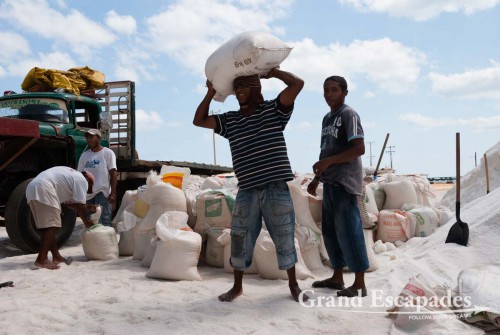
At noon, in scorching heat, a team of young men was doing this back-breaking job, working like machines. When we approached, the driver called us over, cracking jokes: ?Watch these guys, who will get skin cancer?. Just watching made us dizzy, two guys were on top of the truck receiving and storing the bags, two guys lifted a bag, placed it onto the head of one of them who carried it the truck. They invited Gilles to help them, but he could not even lift it more than a few centimeters above the ground, which resulted in some content giggles. The team is paid 5.400 COP or approx. 2 Euro for each ton – that amount must be split between the six of them
El Cerrejon, in southern Guajira, one the biggest open-pit coal mines in the world, produces 30 million tons a year, half of the total output of Colombia, the fifth biggest coal producer in the world. Three international companies own the place and had a railway line built all the way to Puerto Bolivar, where the coal is loaded onto ships. The railway runs basically parallel to the gravel road from Uribia to the turn off to Cabo de la Vela. Trains pass frequently and once we counted the incredible number of 130 cars.
After Cabo de la Vela, we neither met nor passed another vehicle. Punta Gallina can only be reached in private transport.

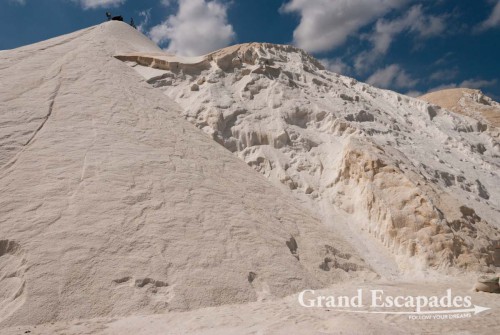
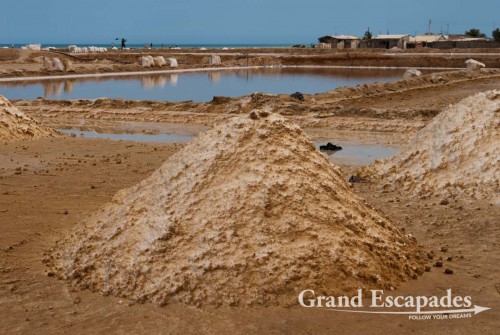
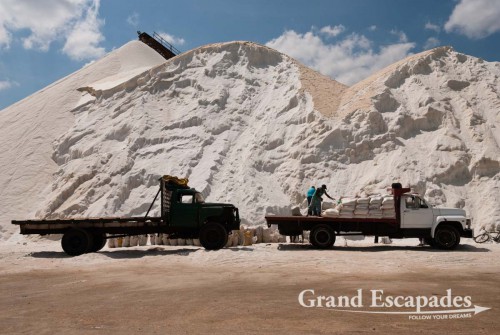
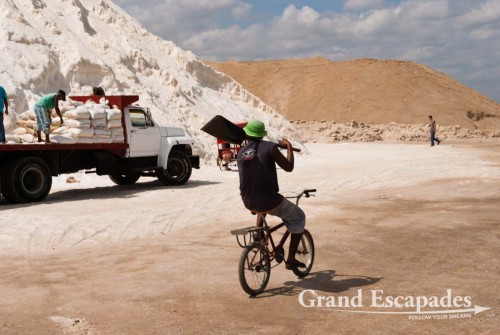
No comments yet.